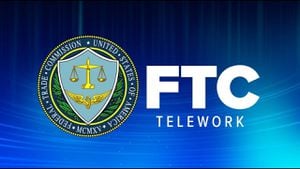Microsoft is making waves by announcing significant changes to the File Allocation Table (FAT32) file format. They've lifted the partition size limit any Windows user has endured for nearly three decades.
This expansive shift means users can now format FAT32 partitions up to 2TB, significantly higher than the previous 32GB limit.
The change is part of the Windows 11 Insider Preview Build 27686, which introduces the command line formatting option for larger FAT32 partitions. Unfortunately, users still have to contend with the 32GB limitation when using the standard graphical dialogue.
The original 32GB limit was established during the heyday of Windows 95 back when technology rapidly evolved. Microsoft’s decision to change this now reflects the need for modern users to have more flexibility with their storage options.
This update doesn't seem to touch on the longstanding individual file size cap of 4GB on FAT32, forcing users to seek alternative file formats when handling larger files. Despite the limitations, FAT32 remains relevant, especially for older devices requiring specific formats, such as USBs and memory cards.
The FAT32 file system is increasingly seen as outdated compared to newer alternatives like exFAT or NTFS, which don't carry the strict file size limits. Nevertheless, its extensive compatibility keeps it widely used across various devices.
Formally established by Microsoft back when hardware specifications were much simpler, FAT32 had been effectively locked at 32GB for too long, hampering users’ capabilities. By allowing larger partitions through command-line utilities, Microsoft adds significant flexibility—at least for users comfortable with terminal commands.
Back to the limitations—Microsoft has acknowledged users’ frustrations over the archaic restrictions. Although they are not modifying the individual file size restriction at this time, the inclusion of larger partitions ensures broader compatibility and usability for many users.
Windows devices have been able to read FAT32 partitions sized up to 2TB for some time now, but actually creating those partitions has posed challenges until this update. Microsoft hopes to roll out improvements to the formatting GUI soon, allowing users to utilize these expanded capacities through standard user interfaces.
Dave Plummer, the developer initially responsible for creating the infamous format dialog back when the limitations began, recently spoke about the arbitrary nature of the 32GB limit. He described it as "a choice made one morning based on math explaining how much 'cluster slack' would be okay," demonstrating how legacy decisions have trickled down through the software.
The FAT32 format, though flawed, has endured various updates for over three decades. The persistent adherence to its boundaries showcases Microsoft's balance of supporting legacy systems alongside progressing to fit modern usage standards.
Microsoft's mention of this change provides hope for users who still operate with extensive FAT32 formatted drives. It highlights their awareness of current user needs, promising new updates to streamline the command-line experience and possibly renew interest or reliance on the format.
With the growing reliance on data storage capacity, this enhancement to FAT32 signifies how important it is for operating systems to cater to user demands. While not everyone may utilize the command line, the expanded storage options bring potential benefits to tech-savvy users.
That said, till all features make their debut to the general public, many users will find themselves waiting on subsequent updates. For those still working with FAT32, the important takeaway remains the potential to create larger partitions through cutting-edge command-line functions.
Moving forward, the tech community awaits how Microsoft will continue refining this OS to accommodate broader needs without compromising legacy users. The hopes are high for future innovations to emerge and simplify the transition for all users, regardless of expertise level.
With these changes, Microsoft has aimed to modernize how users interact with files and their drives, maintaining compatibility even with older formats. It's evidence of the company's commitment to staying relevant and providing solutions amid changing technological landscapes.
Consequently, users are encouraged to keep abreast of upcoming Windows features, particularly those aimed at improving file system management. Many are eagerly hoping for tangible changes they can apply without assisting software.
The future of storing larger quantities of data is here, done through Microsoft's acknowledgment of long-standing limitations. Although many hurdles remain, the initial strides are commendable for calling attention to user frustrations and providing solutions.



